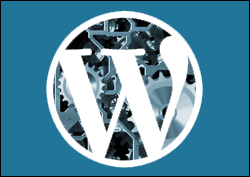
Welcome to Part 3 of our Website Traffic Blueprint article series, where we show you how to drive visitors automatically to your website using the WordPress CMS.
In Part 1 of this article series, we explained why using an expertly configured WordPress site is the key to generating automated web traffic …
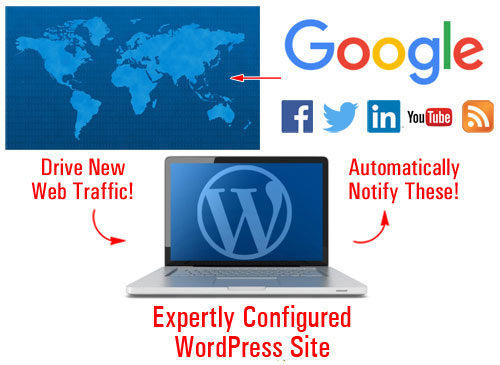
(With an expertly configured WordPress website, all you have to do is post content on a consistent basis to automatically generate more traffic!)
In Part Two, we discussed the setup phase of the automation process. We explained the best way to get started if you don’t have a website yet, how to set things up if you already have a site, and what to do if your site was built using WordPress.

(In Part 2 we show you where to set up a WordPress site on your domain)
In this section of the series, we will discuss the configuration phase of the WordPress traffic automation system. We explain how to configure a WordPress site to attract new visitors automatically just by posting fresh content to your site.
WordPress Web Traffic Blueprint – Configuration
Finding ways to drive more traffic to one’s website is often cited by most website owners as one of their greatest challenges online. Businesses are becoming so much more competitive worldwide and are exploring any advantage available to improve their results and performance online.
Having the ability to automatically generate traffic on demand can provide you with a tremendous advantage over other competitors. For business owners, having an expertly configured website gives WordPress users a flying start from the moment their site is launched.
Configuration Is The Difference
There is a significant difference between an expertly configured WordPress site and a site that has been professionally set up by an expert website developer but not necessarily configured to its fullest advantage.
Here’s a simple way to understand the difference:
With a WordPress website that has been expertly configured you get a web presence with an automated online business marketing process!
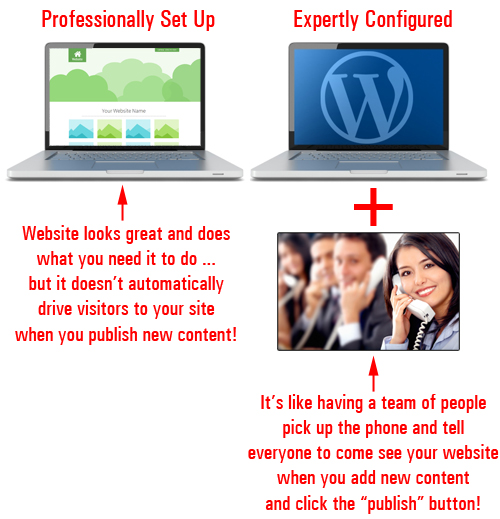
(An expertly configured website gives you a web presence with an automated online business marketing process!)
Not only does it take additional labor to build and integrate an automated online business marketing process into your website, it also takes a special type of expert knowledge.
To illustrate this here’s a joke.
Are Experts Worth The Money They Charge?
All is humming along in the gizmo-making assembly line when suddenly, production stops.
No one can figure out what is wrong and so the plant manager decides to call in an expert to fix the problem.
The expert arrives shortly after being summoned and walks immediately towards the main control box. After staring at the wires and circuitry for what seems like about 2 minutes, the expert then takes out a tiny hammer from his tool belt and makes a single tap about two cm from the right side of the control unit.
Immediately, the whole workshop lights up and begins to work as before.
The manager is filled with joy as he thanks the expert, who then leaves as quickly as he had arrived.
A couple of days after resolving the incident, the factory manager receives a bill for $5,000.
Feeling furious, the factory manager calls the expert. Demanding to know why they have been charged such an exorbitant fee for so little time spent delivering such minimal amount of work, he then requests an itemized invoice to be sent and hangs up.
The next day, a bill of payment arrives and is placed in the manager’s in-tray. Upon opening the envelope, this is what he sees:
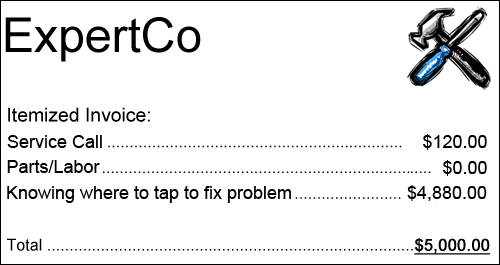
The number one challenge most businesses face online is being able to consistently drive traffic to their sites.
In the story we’ve just described, how much money did the gizmo plant stand to lose when production stopped functioning and no one on the factory floor was able to get things up and running again? Did the expert not have the right to demand fair compensation for investing years developing the knowledge and expertise that allowed him to quickly assess and fix a costly problem?
Similarly, if you could have your WP website or blog set up and configured so all you have to do is publish content to it and search engines, social media and dozens of other online properties would be instantly notified, how much time and money would you save?
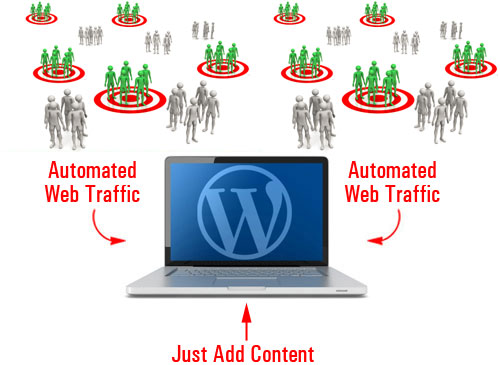
(How much better would your business be if you could automate the process of attracting new visitors to your site?)
Although the solution to many problems often seems ridiculously easy once it’s been implemented, it rarely is that simple or easy when you are trying to figure things out.
Expertly configuring a WordPress site involves more than simply installing a website and configuring a few internal settings. It also requires knowing where to tap! In other words, knowing things such as:
- Which plugins you need to install for certain things to occur on your site.
- Which accounts need to be set up to get certain outcomes
- Which internal and external settings need to be configured to ensure that everything will function as you have imagined, etc.
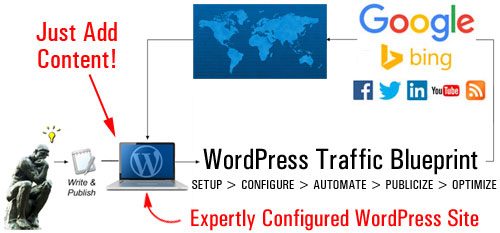
(Driving web traffic automatically with WordPress is a process that requires knowledge and expertise)
This stage of the traffic automation system is not technically difficult, but it’s quite involved and time-consuming. The reason why is because it’s not just about installing and configuring one or two plugins, clicking a couple of buttons … it’s all of this and so much more.
Expertly configuring your website is a process that involves your server, your website or blog, and various third-party sites and/or online services …
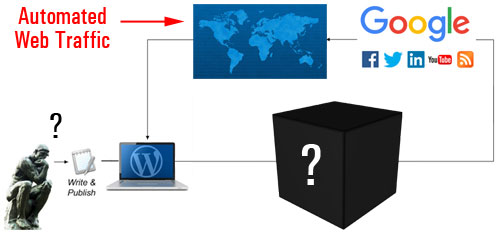
(The configuration phase involves more than just configuring a few WordPress settings)
If we were to create a simplified diagram showing the activities involved in the configuration process, it would look like this …
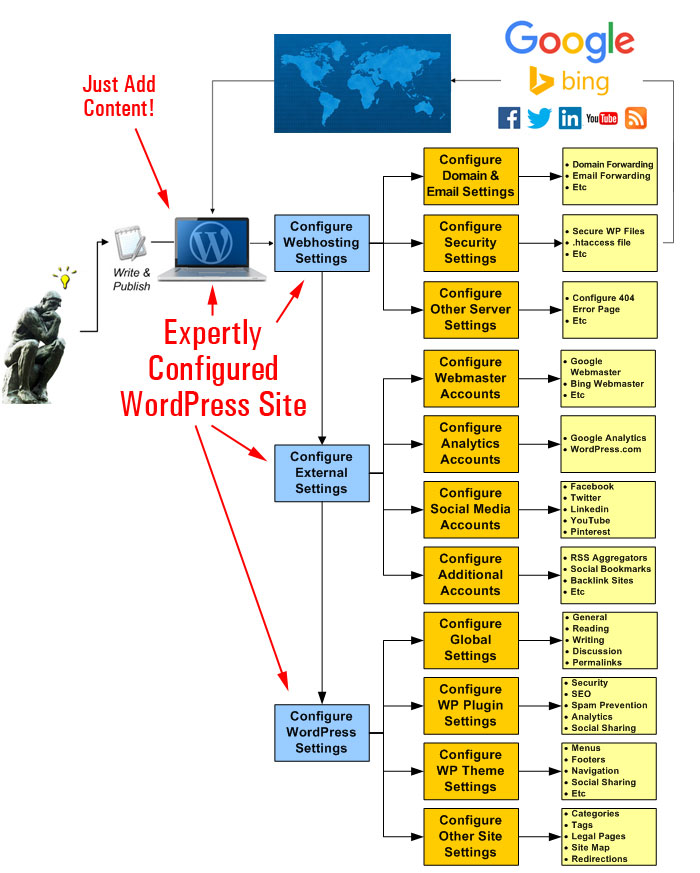
(A simplistic flowchart showing the configuration phase)
Let’s examine these areas.
Web Hosting
We’re not talking about the process of configuring your webhosting account for installation purposes. What we are talking about, is configuring settings and options in your web hosting account specifically for handling web traffic …
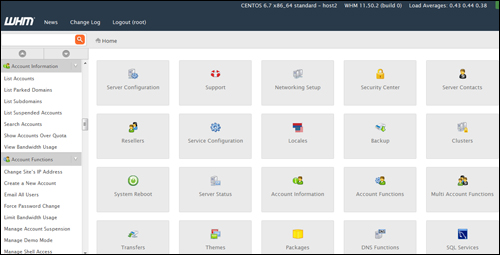
(During the configuration phase, your webhosting account settings need to be fine-tuned for handling both good and bad traffic)
Not all web traffic is beneficial traffic. Some of the web traffic your website may attract will be unwelcome traffic like bot spam, security threats, bot-hacking attempts, etc.
This area of the configuration process, therefore, is all about planning for both good and bad traffic and adjusting settings in your server accordingly. This includes looking at things like integrating server-level spam protection and securing server files, to configuring your domain and email redirections, setting up htaccess redirections, etc …
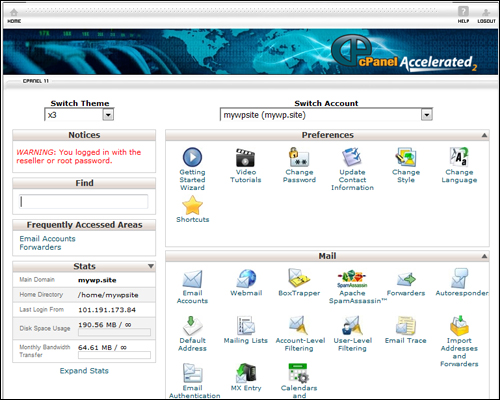
(Have you configured your webhosting settings for handling things like emails, page errors, etc?)
Once your web server settings have been checked and configured (if required), the next step is to configure various external sites.
Integration With External Web Properties
The basic idea of setting up external sites is that all of your content will be published from one central location (your WordPress site) and from there, it will syndicate automatically to other parts of your traffic generation system, or notify traffic-related web properties and applications.
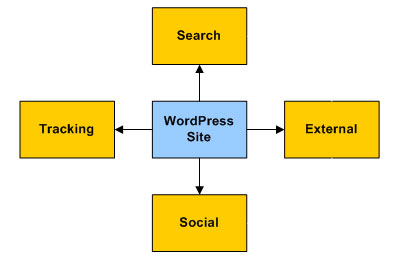
Once these external platforms have been added to your traffic system, content linked back to your website will be automatically posted to these platforms. Your site will receive exposure online, helping you tap into new audiences and new sources of traffic.
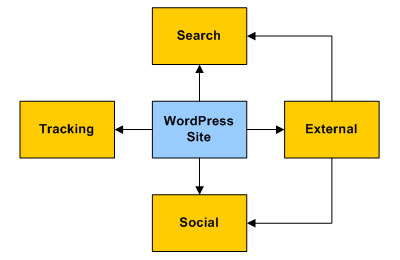
Some of these third-party web properties and online services will need to be set up before configuring your site to speed up the configuration process and some will need to be done later, during the automation phase.
For example, you will want to set up the following accounts:
Google Search Console

(Google Search Console – create a Google-friendly website or blog)
Google Search Console lets you tell Google about your site’s pages, submit XML sitemaps for faster page indexing, and provides you with important data, SEO tools and diagnostic reports about your website.
Once your account with Google Webmasters are set up, this information can be used with traffic-related settings and notifications in WordPress (e.g. using plugins like Yoast SEO) and other applications.
Google Analytics

(Google Analytics)
Google Analytics lets you improve your website’s results, SEO, marketing campaigns, sales conversions, and more, by tracking all user behaviour, pages visited, keywords searched for, search engine and organic referrals, etc.
After setting up your Google Analytics account, visitor tracking information can be easily integrated with WordPress via a simple plugin and and sent to other useful applications and reporting tools.
Bing Data And Tools
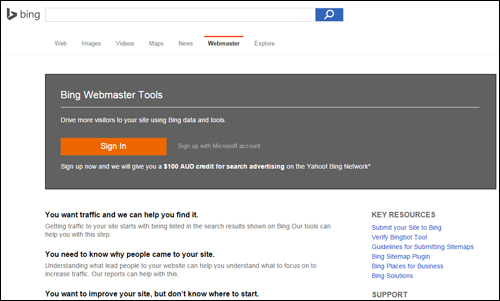
(Drive more traffic with Bing Data And Tools)
Bing Webmaster Tools is similar to Google Search Console. After setting up your account, the details can be used to integrate and automate traffic settings and notifications in WordPress (e.g. using plugins like Yoast SEO – see further below) and other applications.
WordPress.com
(WordPress.com)
As explained in Part 2, WordPress offers both a hosted (WordPress.com) and a self-hosted (WordPress.org) option. We recommended choosing the self-hosted WordPress option if you plan to grow a professional business presence online.
WordPress.com (the hosted option), however, provides some great features, which various WordPress plugins can access. We recommend setting up an account with WordPress.com, therefore, and we’ll explain how to integrate these features into your traffic generation system in Part Four of this article series.
Social Media And Social Bookmarking Sites

(Syndicate your content automatically to your social media sites and social bookmarking accounts and attract new visitors to your site)
You will need your various social media and social bookmarking accounts set up before you can configure these as part of your traffic generation system.
Once you have set up and configured everything, you will be able to syndicate your content automatically to your social media and social bookmarking accounts and get new visitors to your site.
You should have accounts set up with all the big social networks – Facebook, Twitter, LinkedIn, YouTube, Pinterest, etc.

There are many social sites you can set up accounts with and syndicate your content to. You don’t need to go crazy, just pick the ones that will work with your setup and/or content sharing tools (we will review some of these tools in more detail further below and in the Automation phase).
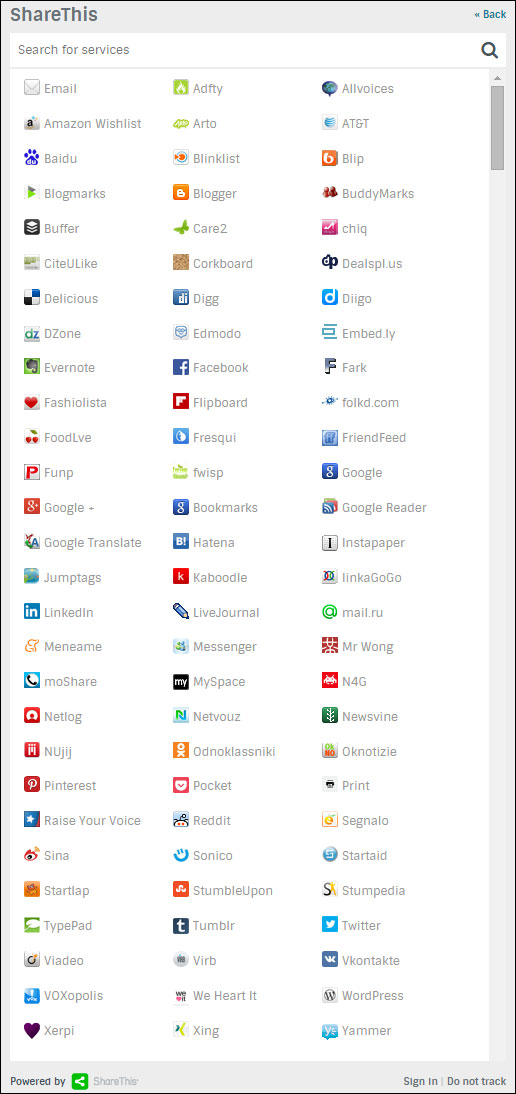
(There are many social bookmarking sites you can syndicate your content to. Image source ShareThis.com)
Additional Solutions, RSS Aggregators, Etc.
There are a number of emerging platforms and RSS aggregators that can serve as second-tier sources of traffic. Some are free or provide free levels, and some are more suitable for enterprise-level applications.
For example, here is a content aggregator that allows you to add your WordPress site feed …
RebelMouse
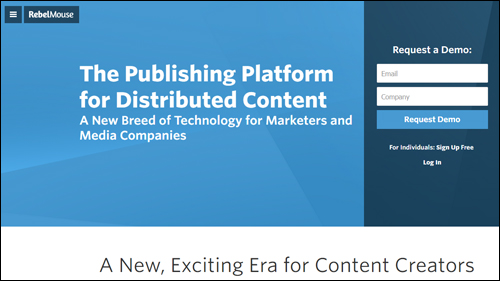
(RebelMouse)
RebelMouse is an aggregator for your RSS feeds and social profiles. Your content is displayed in a Pinterest-like format and users can follow your website.
![]()
There are many different solutions you can incorporate into your traffic system. Please feel free to contact us if you would like to explore this area further and discuss a configuration plan to suit your needs.
After you have configured your server settings and set up third-party service accounts, it’s time to configure your WordPress site’s settings.
Configuring Your WordPress Site For Traffic
The first step in configuring your WordPress site for traffic is to ensure that your global settings have been correctly set up.
Let’s go over some of the important points.
Global WordPress Settings
Your WordPress dashboard area contains a Settings menu that allows you to modify your site’s main settings …
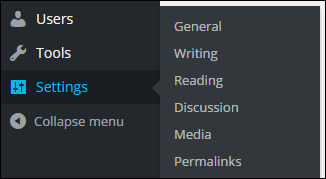
(WordPress settings section)
General Settings
Content entered into fields like Site Title and Tagline can influence your site’s SEO, search listings, etc …
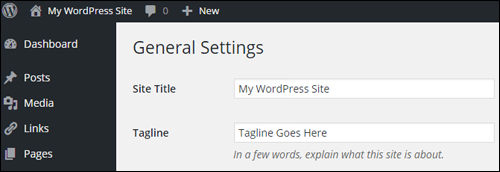
(Global Settings – General Settings)
Writing Settings
The Writing Settings area contains an important and often overlooked automated traffic notification system …
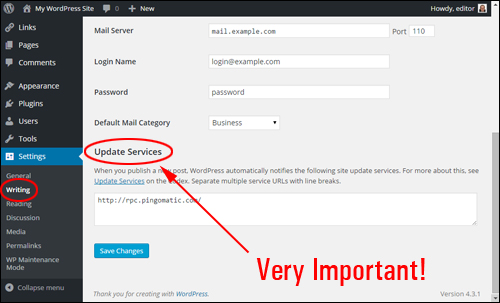
(WordPress Settings – Writing Settings)
As stated below the Update Services section title,
When you publish a new post, WordPress automatically notifies the following site update services …
Unless you or your webmaster have specifically chosen to discourage search engines from indexing your site, then your site will automatically ping the list of services entered into the Update Services text area
With an ‘out of the box’ WordPress installation, this section displays only one entry …
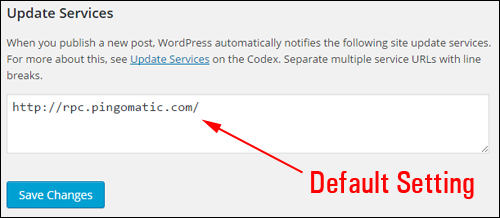
(Writing Settings – Update Services)
WordPress lets you notify dozens of update services automatically – just add a list of all the update services you want to notify as soon as you publish a new post to this section …
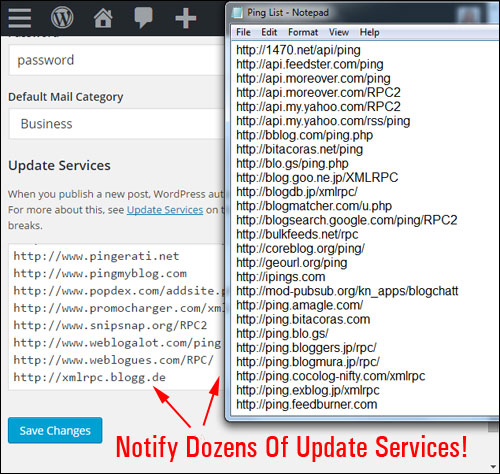
(Notify dozens of update services automatically!)
![]()
Download A Comprehensive List Of Ping Services For Your WordPress Site!
Click the link below to download a comprehensive list of reliable and authoritative ping services for your WordPress site or blog:
Download A List Of Ping Services For Your WordPress Site
***
Note: If you need help setting up the list of ping services on your site, we recommend using a professional web services provider. You can find professional WordPress service providers in our WordPress Services Directory.
Reading Settings
This section affects how visitors will see your content when they visit your home page and blog pages.
The syndication settings on this page can influence web traffic. For example, choosing to display the full text vs a summary of your post, affects how your content displays to users in RSS readers and RSS email campaigns, and could play a part in someone’s decision to explore your content further, and whether or not they will visit your blog to view the rest of the content from a partial feed, or read the content in full without the need to click through to your site.
As far as traffic is concerned, however, the most important setting in this section is whether the Search Engine Visibility checkbox is ticked or not.
Generally, you would want search engines to visit your site. Leaving this box unchecked allows WordPress to ping your update services list whenever a new post gets published (see Writing Settings above). Unless you have a specific reason why search engines should not visit your site, do not check this box …
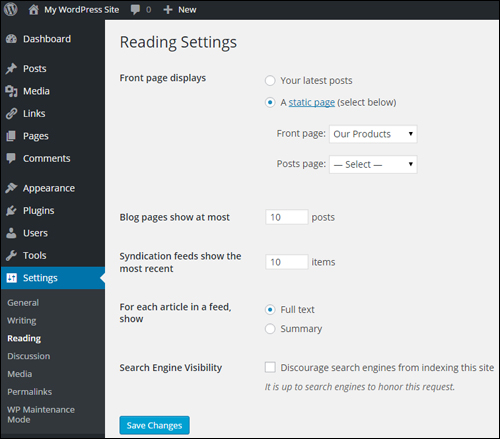
(WordPress Settings – Reading Settings Screen)
Discussion
Although the settings in this section are mostly concerned with how users engage with content on your site, you have the option to allow notifications to blogs linked to from your articles, and to allow link notifications from other blogs (pingbacks and trackbacks). This can work for you, but it can also drive bad traffic in the form of SPAM comments …
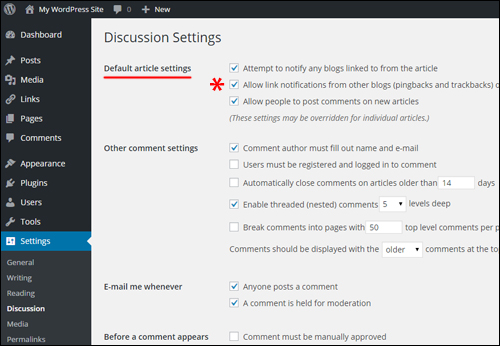
(WordPress Settings – Discussion Settings Section)
Permalinks
Your Permalink settings allow you to create SEO-friendly URLs …
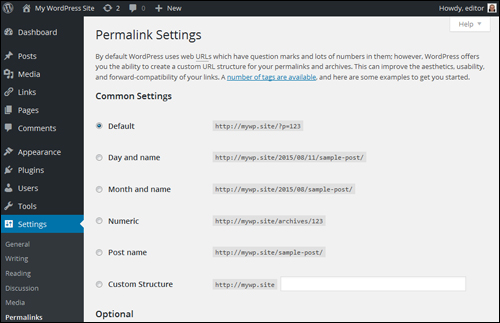
(WordPress Settings – Permalink Settings)
Here are some of the options for configuring your post permalinks …
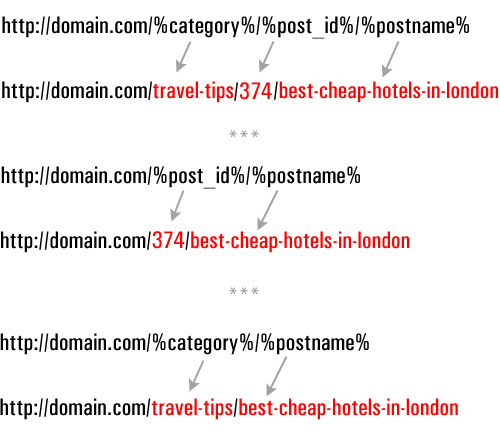
(Configuring permalinks)
We have written a detailed tutorial about using permalinks here: Improve Your WordPress SEO With Permalinks
Plugin Settings
The WordPress developer community makes available thousands of plugins that can add just about every type of functionality to your site, including plugins that add traffic generation capabilities.
Here are examples of plugin categories and plugins that can help your site generate more traffic
Blog Defender
Once again, it’s important to configure your site for handling both good traffic and bad traffic. Regardless of the type of business you run or plan to run online and how small you think your web presence is, you simply cannot ignore the importance of web security.
 (WordPress Security Plugins stop bad traffic from harming your web presence)
(WordPress Security Plugins stop bad traffic from harming your web presence)
Security plugins like Blog Defender help to make your WordPress blog invisible to hackers and botnets.
More information:
SEO Plugins – Yoast SEO
SEO plugins help drive more traffic by making your site more search engine friendly …

(WordPress SEO plugins help increase traffic by improving your website’s SEO)
Use a plugin like Yoast SEO to improve your SEO. Properly configured, this plugin not only makes your web pages easier for search engines like Google and Bing to index, it also gives you control over how your content is displayed in Google’s search results and social media pages, e.g. Facebook, Twitter, and Google+.
WordPress Social Plugins
Allowing visitors to share your content online can help drive more traffic to your site, especially if you provide great content that adds real value to readers.

(WordPress users can easily add social sharing features to their website using free or inexpensive plugins)
There are many free or inexpensive social sharing plugins to choose from.
Many social plugins allow you to choose which sites visitors can share your content to, embed social buttons into your content, set up custom update notifications, display/hide share counters (e.g. number of shares), etc. Some social plugins even allow you to set up protected content areas on your pages which users can unlock by linking or tweeting your page.
WordPress Traffic Generation Theme Settings – Configuration
As well as configuring various plugins, many WordPress themes also include features that can help you drive more traffic to your site.
For example, as well as options and settings for configuring the layout and design of your website, many themes also give you built-in features that let you improve search optimization and site navigation structure for better indexing, add analytics code, social sharing buttons, etc …
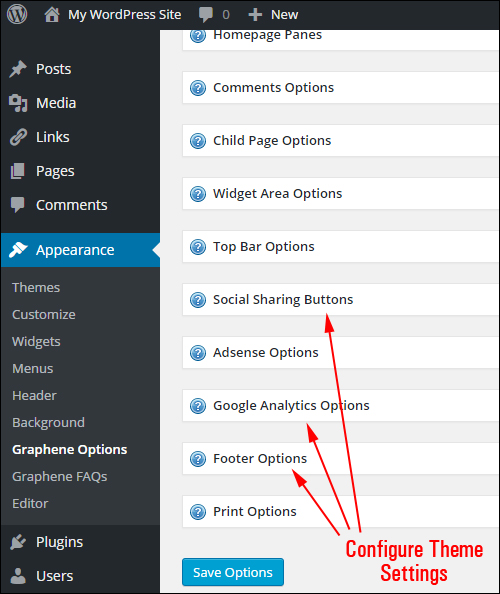
(Many themes like Graphene (a free theme) can be configured for better traffic results)
With a number of WordPress themes, adding social sharing buttons and features to your website is as easy as clicking a couple of buttons to configure your settings and enable the feature …
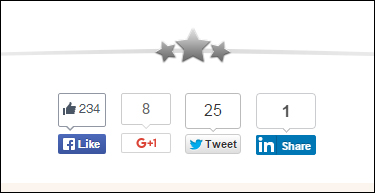
(Many WordPress themes include built-in social sharing features)
WordPress Traffic Automation – Additional Configuration
Last (but by no means least) in the web traffic system configuration process, are the components that need to be configured outside of the global settings.
This includes the following:
Legal Pages
Once again, when preparing your site for a growth in traffic, it’s important to plan not only how to handle bad and good traffic but also for all the situations that can seriously affect your business as more and more people find and begin to visit your website.
If you do business online, you need to make sure that your website is found to comply with legal requirements of government agencies that regulate business practices online.
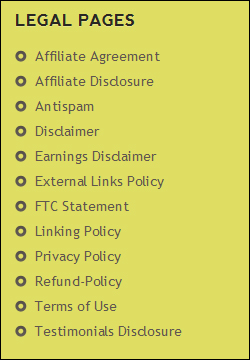 (Does Your Site Comply With The Law?)
(Does Your Site Comply With The Law?)
To learn more about the importance of having a legally compliant website, go here:
Post Categories & Post Tags
Categories and post tags help search engines index your website, which helps to increase traffic.
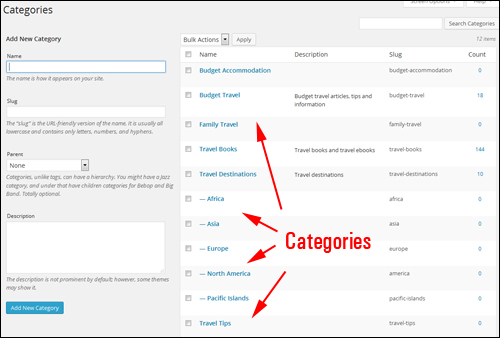
(WordPress categories help search engines index your web pages, which improves traffic.)
As we strongly recommend in this article, it’s best to set up your website’s tags and categories during the Website Planning Stage.
When looking at ways to automate and improve traffic, you will want to review and make sure that your site’s tags and categories have been correctly set up to deliver optimal benefits.
A Site Map Of Your Posts And Pages
A site map that displays all of your site’s pages and posts to visitors is not only a useful navigation tool, it can also help external tools discover more of your website content …
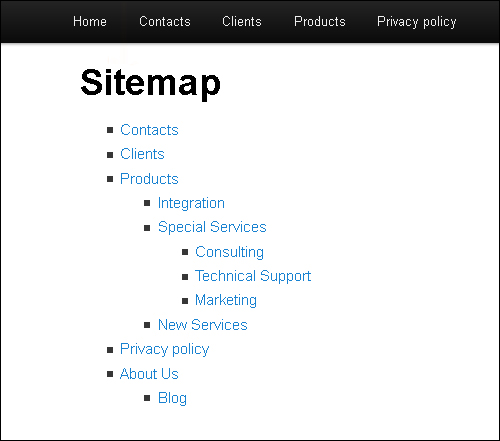
(Site Map – great for visitors and beneficial for traffic too!)
![]()
An HTML site map and an XML sitemap are two different things. Although Google can index your site just from an XML sitemap (which plugins like Yoast SEO can provide – see earlier section), allowing visitors to find more pages on your site can result in increased traffic.
404 Page – Don’t Forget To Configure It!
When visitors searching online for your website type in the wrong URL or click on hyperlinks pointing to an incorrect destination on your website, they are greeted with a 404 error page …
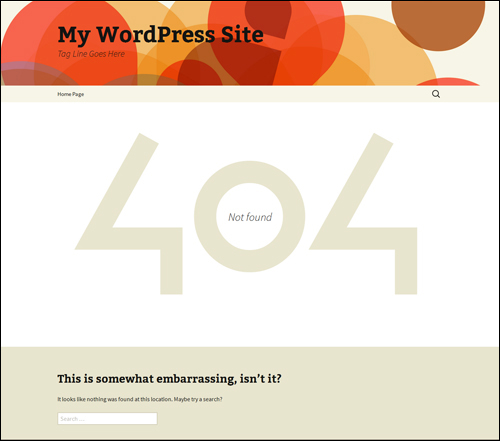
(A 404 Error Page)
A 404 page can be configured to funnel traffic to your functional pages …

(Configuring your 404 Not Found error page allows you to recover traffic that may otherwise be lost.)
![]()
Although a 404 Not Found page can be set up on your web server, there are plugins for WordPress that let you easily configure your 404 page from your WordPress dashboard.
WordPress Traffic Automation Blueprint: Configuration Phase – Summary
Once your site has been expertly configured and fully set up, all you then need to do to automatically start generating more traffic is post great content on a consistent basis.
The process of expertly configuring a WordPress site, however, can be quite involved and elaborate , requiring the configuration and integration of different elements and web properties …
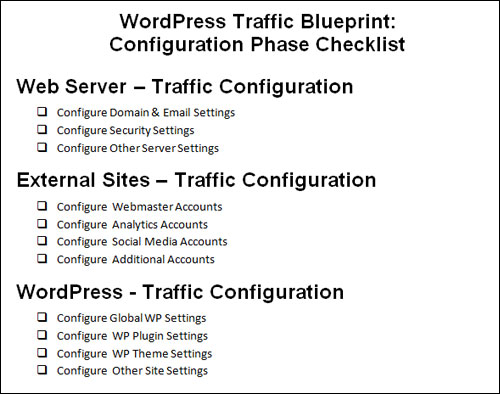
(Traffic System – Configuration Checklist)
![]()
The kind of expertise involved in expertly configuring a WordPress site typically takes some website developers a long time to acquire.
Once you have expertly configured your WordPress site, the next step is to automate the process. This step is addressed in the next article in the WordPress Traffic Automation Blueprint series.
This is the end of Section 3
To continue reading this article, click on the link below:

![]()
This tutorial is part of an article series aimed at helping you learn how to grow your business online with a WordPress-powered website and proven online marketing methods.
Want To Get Automatically Notified When New Tutorials Get Published? Then Subscribe To Our Site!
***
"I am beyond impressed with what you have put together. I can tell that you put a ton of hard work into building what you have. You have the absolute best content on WordPress I have ever seen!" - Robert T. Jillie
***
